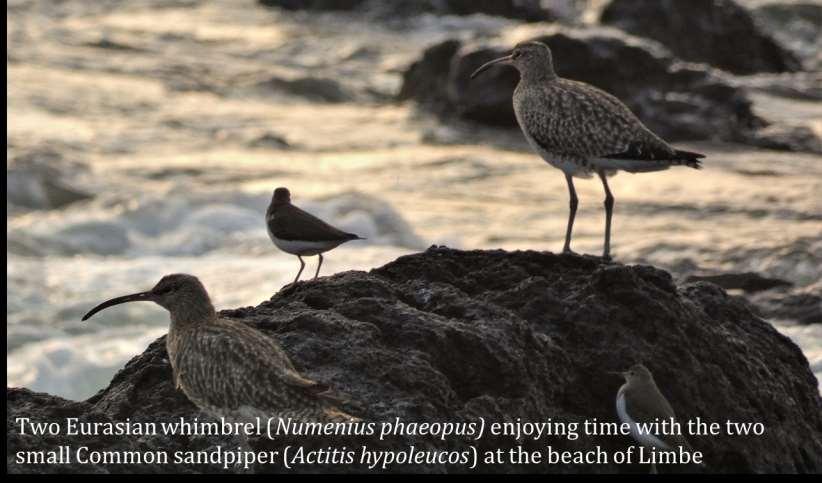
3 minute read
3. Wildlife rescue, rehabilitation and release programme

Image 5 a&b. Our Long term Veterinarian volunteer, Daniel, is doing a lot of training with the new ultrasound (funded by Jane Goodall Institute). On the left, Daniel was performing a check on the white-belly pangolin because he was not excreting well. On the right, during the health check of the Chimpanzee, the vet was doing a quick check and was showing various images on the genital system.
Advertisement
January 2021 objectives:
□ Continue with the ongoing activities □ African grey parrots: Continue to provide special care for the last individuals with difficulties improving their body conditions □ Chimpanzee: continue ongoing social integrations/introductions □ Vet cares: Contraception: Drills (4), Chimpanzees (1), Patas (1), Olive baboon (1); General health check: Drill (1), Mandrill (1)
3. Wildlife rescue, rehabilitation, and release programme
Funders
Arrival & quarantine □ Rescued 1 baby white-bellied pangolin (Image 6) □ Rescued 15 African grey parrots (Images 7-8)
Behavioural rehabilitation
□ Genet: Continued behavioural rehabilitation
Social rehabilitation
□ African grey parrot: Continued to maintain the care and enrichment to the 42
African grey parrots in the large aviary □ Preuss’s Monkey: Achieved the introduction of juvenile male Camfor to the Redeared group (Image 9) □ Drill/Mandrill: Continued the rehabilitation of the two new babies in a pair to facilitate their rehabilitation
□ Tantalus Monkey: Continue to introduce juvenile male Noun into the savannahdwelling group
Transfer to another facility □ The white-bellied pangolin rescued in December 2022 was successfully transferred to Tikki Hywood Foundation in Mefou, Central Region.
Post-Release (ecological & environmental rehabilitation)
□ African grey parrot: Two methods were tested: 2 GPS were put with glue in different parts of the body and 2 others with a harness (donated by the Max Planck Institute for Ornithology) (Images 10-13)
Release (ecological & environmental rehabilitation)
□ None

Image 6. A new white-bellied pangolin was rescued at the LWC and then transferred to the Tikki Hywood Foundation in Mefou, Center Region for specialized care and rehabilitation.

Image 8. Most of the parrots had their feathers of the wings cut and with glue, hence their full recovery will take months of adequate specialized care and monitoring. Image 7. Fifteen African grey parrots seized by MINFOF in Edéa, arrived at the LWC this month in terrible conditions. It took them more than 5 days to climb the platforms and perches because they were lacking physical strength.


Image 9. Camfor, the unique Preuss’s monkey in captivity in the world and cared for at the LWC has finally joined a group!

Image 10. Four dummy GPS tags were donated by the Max Plack Institute to start the trial for post-release monitoring. They were arranged in 2 different methods.

Image 12. The second method is to attach a GPS tag to the back of the bird with glue. This method would avoid the risk of the harness getting caught in some small branches when released. But on the other hand, the GPS can fall more easily than with the harness. Image 11. The first method is to place the GPS tag on a harness. The rope of the harness is fixed to the GPS with a nonabsorbable suture and protected by a small ring.


Image 13. It was also suggested to try the second method but placing the GPS tag on the tail feathers as described in the photo.
January 2021 objectives:
□ Continue the ongoing rehabilitation activities □ Drill & Mandrill: continue the social rehabilitation of infants Ekema (Mandrill) &
Malika (Drill)









